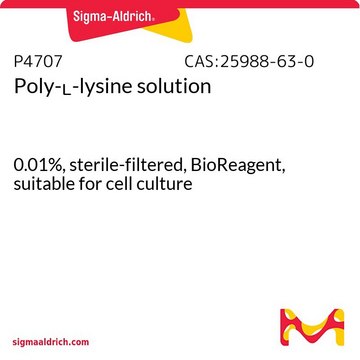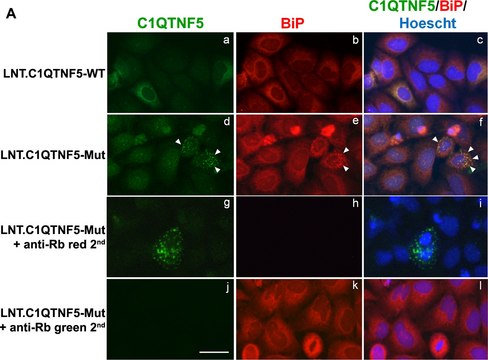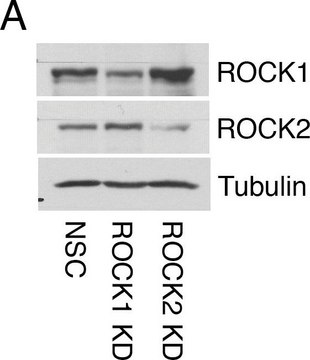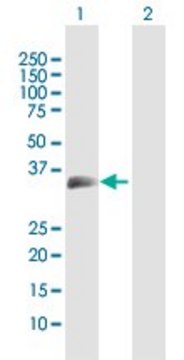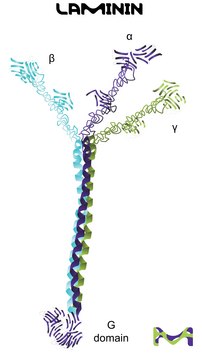推荐产品
生物来源
rabbit
偶联物
unconjugated
抗体形式
affinity isolated antibody
抗体产品类型
primary antibodies
克隆
polyclonal
表单
buffered aqueous solution
分子量
antigen ~82 kDa
种属反应性
human
包装
antibody small pack of 25 μL
浓度
~1.5 mg/mL
技术
immunoprecipitation (IP): 10-15 μg using A431 cell lysates
indirect immunofluorescence: 8-16 μg/mL using HeLa cells
western blot: 1.5-3.0 μg/mL using HeLa cell lysates
UniProt登记号
运输
dry ice
储存温度
−20°C
靶向翻译后修饰
unmodified
基因信息
human ... VAC14(55697)
一般描述
VAC14 (VAC14 component of PIKFYVE complex) gene (also known as ArPIKfyve, TAX1BP2, TRX) is mapped within human chromosome 16q22.1-q22.2 and encodes a scaffold protein. This protein is a component of phosphoinositide kinase, FYVE-type zinc finger containing (PIKfyve) protein kinase complex.
应用
Anti-VAC14 antibody produced in rabbit has been used in:
- immunoblotting
- immunoprecipitation
- immunofluorescence
生化/生理作用
VAC14 is a regulator of phosphoinositide kinase, FYVE-type zinc finger containing (PIP5K3/PIKfyve), a dual specificity kinase that phosphorylates phosphatidylinositol 3-phosphate (PtdIns3P). This generates housekeeping phospholipid PtdIns(3,5)P2, that controls multivesicular body morphology, retrograde traffic to the trans-Golgi network and is critical for neuronal survival. VAC14/ArPIKfyve upregulates PIKfyve phosphoinositide-5-kinase activity. In 3T3-L1 adipocytes, VAC14 and PIP5K3 interaction has been shown to play a critical role in insulin-regulated glucose transporter (GLUT4) translocation from intracellular storage compartment to the cell surface. Knockout of the VAC14 gene in mouse results in massive neurodegeneration and affects neurons in the midbrain and of the peripheral sensory system.
外形
Solution in 0.01 M phosphate buffered saline, pH 7.4, containing 15 mM sodium azide.
免责声明
Unless otherwise stated in our catalog or other company documentation accompanying the product(s), our products are intended for research use only and are not to be used for any other purpose, which includes but is not limited to, unauthorized commercial uses, in vitro diagnostic uses, ex vivo or in vivo therapeutic uses or any type of consumption or application to humans or animals.
未找到合适的产品?
试试我们的产品选型工具.
储存分类代码
10 - Combustible liquids
闪点(°F)
Not applicable
闪点(°C)
Not applicable
法规信息
新产品
从最新的版本中选择一种:
分析证书(COA)
Lot/Batch Number
John R Ferrarone et al.
Proceedings of the National Academy of Sciences of the United States of America, 121(21), e2403685121-e2403685121 (2024-05-15)
The tumor suppressor LKB1 is a serine/threonine protein kinase that is frequently mutated in human lung adenocarcinoma (LUAD). LKB1 regulates a complex signaling network that is known to control cell polarity and metabolism; however, the pathways that mediate the tumor-suppressive
VAC14 syndrome in two siblings with retinitis pigmentosa and neurodegeneration with brain iron accumulation
Lyon GJ, et al.
Cold Spring Harbor molecular case studies, 114(37), mcs-a003715 (2019)
Seong M Kim et al.
The Journal of clinical investigation, 126(11), 4088-4102 (2016-11-02)
Oncogenic mutations drive anabolic metabolism, creating a dependency on nutrient influx through transporters, receptors, and macropinocytosis. While sphingolipids suppress tumor growth by downregulating nutrient transporters, macropinocytosis and autophagy still provide cancer cells with fuel. Therapeutics that simultaneously disrupt these parallel
VAC14 nucleates a protein complex essential for the acute interconversion of PI3P and PI (3, 5) P2 in yeast and mouse
Jin N, et al.
The Embo Journal, 27(24), 3221-3234 (2008)
ArPIKfyve-PIKfyve interaction and role in insulin-regulated GLUT4 translocation and glucose transport in 3T3-L1 adipocytes
Ikonomov OC, et al.
Experimental Cell Research, 313(11), 2404-2416 (2007)
我们的科学家团队拥有各种研究领域经验,包括生命科学、材料科学、化学合成、色谱、分析及许多其他领域.
联系技术服务部门
